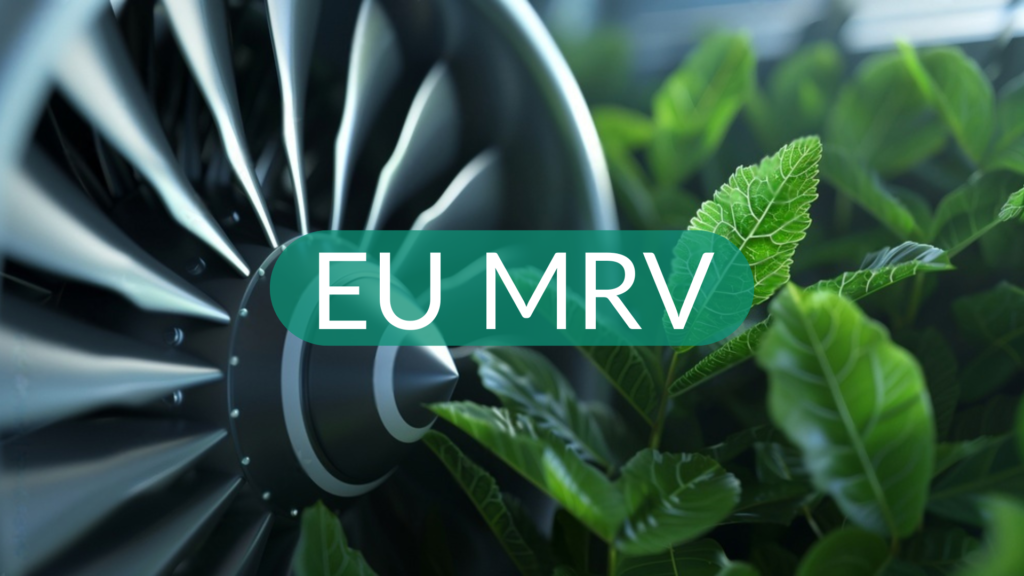
The European Union’s MRV (Monitoring, Reporting, and Verification) regulation has become a cornerstone in the maritime industry’s journey toward decarbonization. As environmental accountability tightens, understanding and complying with these regulations is not just mandatory but also pivotal to sustainable operations. This post delves into the practical aspects of EU MRV compliance, offering guidance to shipowners and operators navigating this complex yet essential framework.
As a sustainability consultancy, VURDHAAN actively supports maritime operators in understanding and aligning their operations with MRV and EU ETS requirements. Our tailored strategies and tools empower stakeholders to achieve seamless compliance and measurable emissions reductions.
EU MRV and Its Integration into Maritime Decarbonization
Introduced in 2015 and expanded in subsequent years, the EU MRV regulation requires maritime operators to track and report CO2 emissions from ships over 5000 gross tonnage engaged in intra-EU voyages. This forms part of a broader effort to incorporate maritime emissions into the EU Emissions Trading System (EU ETS) starting from 2024.
The regulation emphasizes transparency, consistency, and accuracy in emissions monitoring. To this end, operators are required to implement robust systems and methodologies that align with the MRV principles while addressing gaps to achieve continuous improvement.
Step-by-Step Guidance for Compliance
1. Understanding the Regulations
Familiarizing yourself with the latest amendments to the EU MRV regulation, including its integration with the EU ETS, is the first step. Operators must also be aware of related directives, such as Regulation 2023/2449, which updates monitoring plan templates to include methane (CH4) and nitrous oxide (N2O) emissions.
2. Assigning Responsibilities
Clear role assignments within the organization ensure smooth implementation. Utilizing existing systems, like ISO 14001 or ISO 50001, enhances integration and avoids duplication of effort. Designated personnel must ensure all MRV-related responsibilities, such as data collection and reporting, are effectively managed.
3. Developing a Comprehensive Monitoring Plan (MP)
A monitoring plan is the backbone of compliance. It should include:
- Ship-specific details (e.g., IMO number, port of registry)
- Identification of all emission sources
- Data collection and quality assurance procedures
- Control systems ensuring accuracy and integrity
VURDHAAN emphasizes developing monitoring plans that are transparent, comprehensive, and adaptable to evolving regulations. Our expertise in regulatory frameworks like ISO 14083 ensures maritime operators are well-prepared.
Submission and Verification Process
Submitting the Monitoring Plan
Operators must submit their monitoring plan through the THETIS-MRV platform for assessment by an accredited verifier. Any feedback should be incorporated before final submission to the administering authority, particularly for ships falling under the EU ETS.
Verification of Emissions Reports
Annual emissions reports (ERs) should be prepared using the electronic template in THETIS-MRV. The verified ER must then be submitted to the administering authority and other relevant entities by March 31 each year.
Monitoring and Reporting Best Practices
1. Data Collection and Quality Assurance
Robust data collection systems ensure accuracy and traceability. Implementing the “four-eyes principle” during data collection enhances reliability. Regularly updating IT systems and maintaining equipment ensures compliance with quality assurance protocols.
2. Reporting and Transparency
Operators must document emissions for all voyages within a calendar year, using indicators like Energy Efficiency Design Index (EEDI) or Estimated Index Value (EIV). Verifiers assess these reports for consistency and alignment with the approved monitoring plan.
3. Compliance with EU ETS
For ships under the EU ETS, operators must surrender allowances corresponding to their verified emissions. VURDHAAN’s AI-driven solutions, like SustainBuddy, simplify this process by providing real-time insights and compliance tools tailored to maritime needs.
Building Capacity for Compliance
Effective compliance goes beyond technical procedures; it requires robust capacity building. Operators should:
- Train crew members on data collection and monitoring techniques
- Engage in workshops and utilize video tutorials offered by EMSA on the THETIS-MRV platform
- Foster internal communication to ensure clarity in roles and responsibilities
By empowering their workforce, maritime operators can embed a culture of compliance that aligns with both regulatory and environmental goals.
Conclusion: Transforming Maritime Operations
Compliance with EU MRV regulations and the EU ETS is not merely a regulatory necessity—it is a strategic opportunity to demonstrate environmental leadership. By adopting structured monitoring plans, ensuring transparency, and fostering a culture of sustainability, maritime operators can significantly reduce emissions while gaining a competitive edge in the evolving market.
At VURDHAAN, we collaborate with maritime stakeholders to navigate these complexities with confidence. Through tailored solutions and industry insights, we aim to make sustainability accessible and actionable for every operator. Together, we can chart a course toward a greener, more resilient future for maritime transport.
